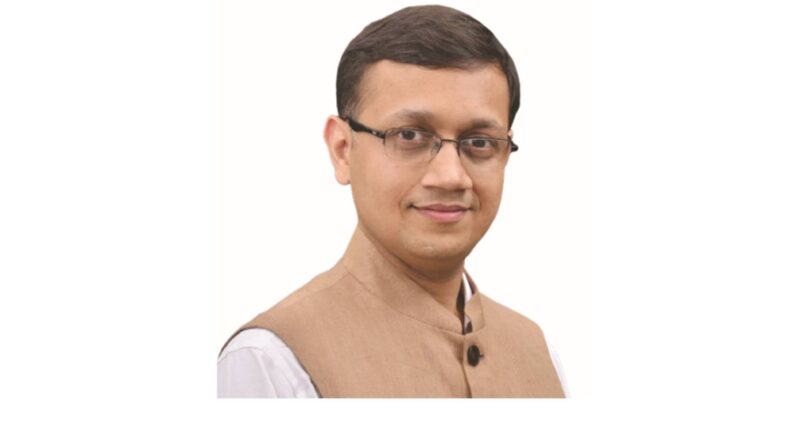Interview with Kanak Jain, Volatility Coach, Founder – SSL Academy, Kolkata
“Volatility plays a crucial role in the mutual fund industry. Similar to the concept in the phrase “Daag Acche Hai.” volatility signifies life and movement, akin to an ECG machine’s pulse graph.”
Q: Kanak, with your extensive experience in financial planning and wealth management, what do you see as the key trends currently shaping the mutual fund industry in India?
A: The mutual fund industry has experienced tremendous growth, expanding over sixfold in recent years to reach a valuation of ₹68 lakh crores. Today, investors are well aware of what mutual funds are, including their transparency, viability, and benefits. The focus has shifted to analyzing the best schemes and onboarding investors. The tagline “Mutual Funds Sahi Hai” aptly reflects the current sentiment and acceptance of mutual funds.
Q: How do you perceive the growth and reach of the mutual fund industry in smaller towns and rural areas? What steps do you think are needed to increase mutual fund penetration in these regions?
A: Penetration in rural India remains very low compared to metropolitan and first-class cities, where the distribution network and investor understanding are significantly better. AMFI is actively working on investor education programs and allocating funds for these initiatives. However, the pace of penetration and growth in rural areas remains slow, highlighting the need for continued efforts to improve awareness and outreach.
Q: In your view, what are some of the challenges the mutual fund industry in India faces, especially in terms of building trust among new investors?
A: The primary challenge in the mutual fund industry is not building trust or transparency but rather reaching more people. For new investors, the process has become simpler and less complicated. However, the distribution network requires further expansion and motivation. While Digital India has significantly contributed to this area, more efforts are needed, especially in rural regions, where education and outreach are minimal. With better distribution networks, mutual funds can achieve even greater adoption.
Q: Given the volatility of the financial markets, how can individual investors better prepare themselves when investing in mutual funds? What role does “volatility coaching” play in this preparation?
A: Volatility plays a crucial role in the mutual fund industry. Similar to the concept in the phrase “Daag Achhe Hai,” volatility signifies life and movement, akin to an ECG machine’s pulse graph. For equity and debt markets, volatility is essential as it drives returns. Managing volatility requires the guidance of a volatility coach or financial advisor who can ensure proper fund selection, timing, monitoring, and process adherence. This professional support simplifies investment decisions and maximizes outcomes.
Q: You specialize in gamification of personal finance. Could you share how gamification can make mutual funds and investment concepts more accessible and engaging, especially for new investors?
A: The gamification of personal finance is an innovative and effective way to engage investors. It simplifies concepts like asset allocation, equity, debt, and rebalancing. India now has approximately 300 licensed volatility coaches conducting these games nationwide. These games benefit both new and experienced investors by raising awareness and enhancing financial literacy. Diversification training becomes more accessible, making the investment process simpler and more enjoyable.
Q: With the rise of digital platforms, what impact do you think technology will have on the mutual fund industry’s growth and investor engagement over the next five years?
A: Digital platforms and fintech companies have revolutionized the mutual fund industry. Processes that once took hours, involving physical forms and checks, are now completed in minutes through apps and platforms like K-Fintech. These tools simplify portfolio visibility, comparisons, and analyses, building trust and enhancing the overall experience for existing investors. The rise of digital platforms is a key driver of the industry’s significant growth.
Q: SSL Academy is well-regarded in the financial education field. What has been the academy’s approach in educating individuals on mutual funds and helping them make informed investment decisions?
A: SSL Academy, an edu-fintech company, leverages technology to educate investors and distributors. It offers various research tools and software to analyze mutual fund performance, create financial plans, and generate insightful reports. These resources simplify understanding systematic investment plans (SIPs), systematic withdrawals, rolling returns, and scheme comparisons, contributing to better investment decisions and sustainability.
Q: In recent years, the mutual fund industry has focused on investor awareness programs. What additional steps do you think the industry could take to improve financial literacy and instill investment discipline among Indian households?
A: Teaching financial literacy through games is an effective method to reach households and corporates. Games like asset allocation and volatility games make finance—a typically boring subject—more engaging and easier to understand. Once individuals grasp the concepts through these games, the knowledge sticks, leading to better financial decisions. AMFI’s efforts in advertisements and storytelling can be further expanded to enhance awareness.
Q: In your experience, how do investors typically react during periods of high market volatility, and what advice would you give them to stay focused on long-term goals rather than short-term market fluctuations?
A: Market volatility often triggers investor reactions, leading to suboptimal decisions. This highlights the importance of having a volatility coach, mutual fund distributor, or registered investment advisor. These professionals guide investors, ensuring that decisions align with long-term investment goals and remain unaffected by short-term market fluctuations.
Q: What future prospects do you foresee for the mutual fund industry in India, especially as more people turn to mutual funds as a wealth-building tool?
A: The future of the mutual fund industry in India is bright. Currently, only 5.5% to 6% of small savings are invested in mutual funds, compared to 75% in the United States. With increasing numbers of distributors, investors, and transactions, the industry is poised for exponential growth. Unlike sector-specific trends in industries like IT or pharma, investments are a constant necessity, ensuring sustained growth in this sector.
Q: Finally, your mission is “to ensure growth of at least one human-being every day through financial planning, literacy, and education.” Could you share a memorable example where you felt you significantly impacted someone’s financial journey, particularly through mutual fund investments?
A: Over the past 25 years, numerous success stories have emerged from mutual fund investments. Investors who started with modest amounts have built substantial wealth, enabling them to achieve milestones like higher education for their children and fulfilling personal goals. The wealth management process—from data gathering and analysis to monitoring and implementation—has proven invaluable. Seeking expert advice ensures better outcomes, allowing individuals to focus on their strengths while relying on professi-onals for financial management.




